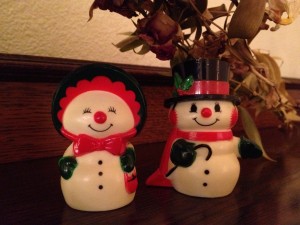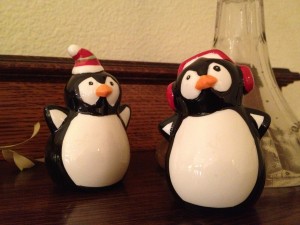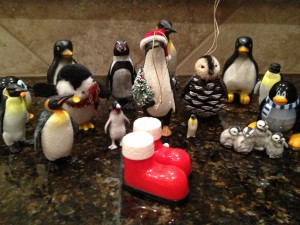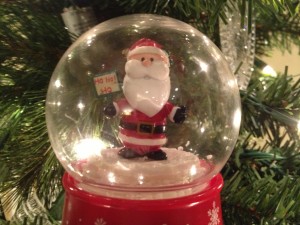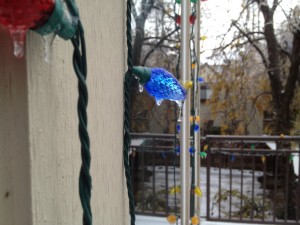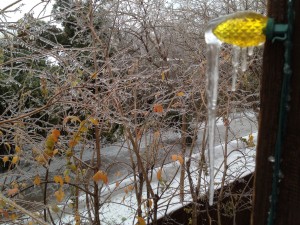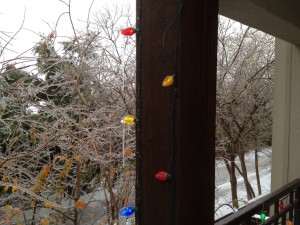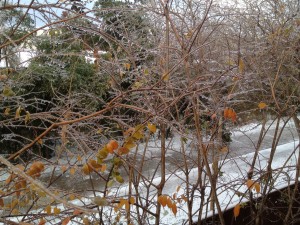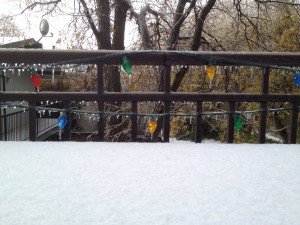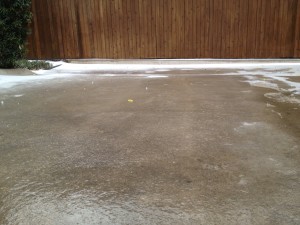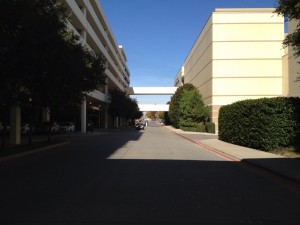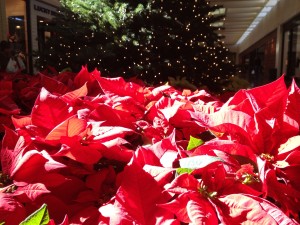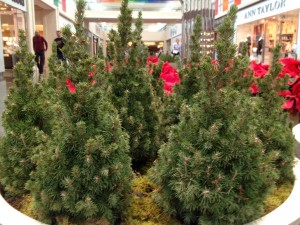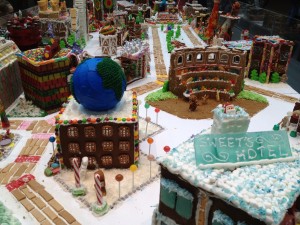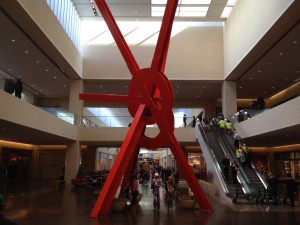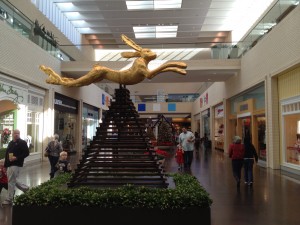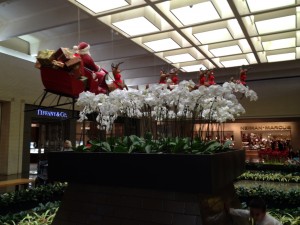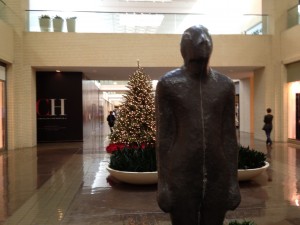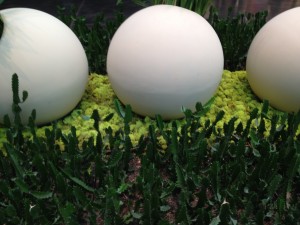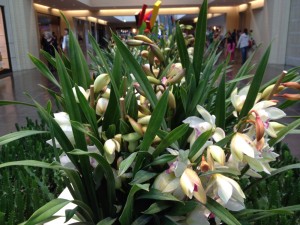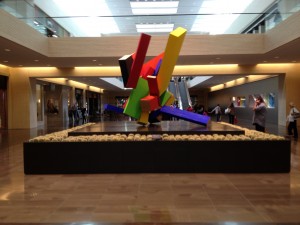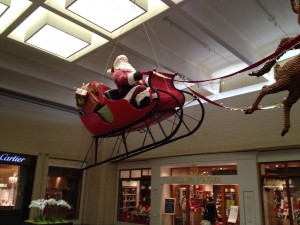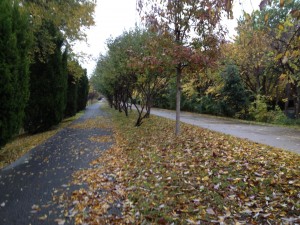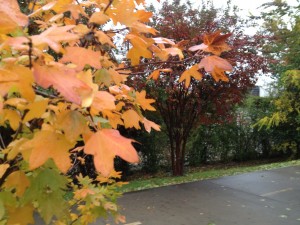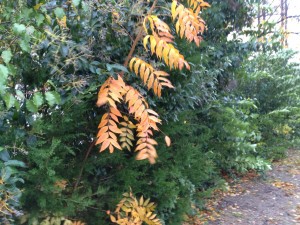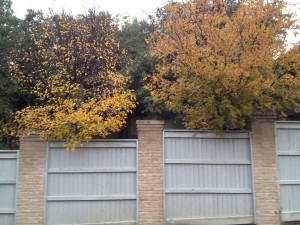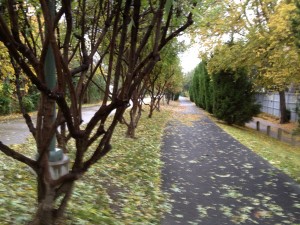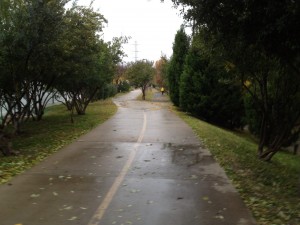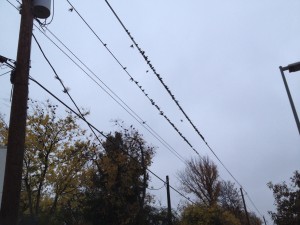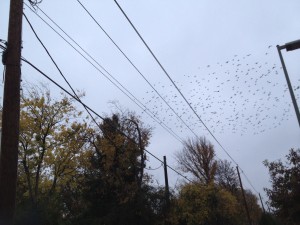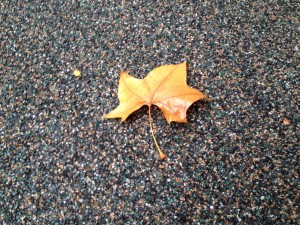About a thousand years ago, somewhere near 1000 AD, in the evening, a man in Germany was strolling by his neighbor’s house. The passer-by noticed the neighbor kneeling beside something big on the ground. A few sparks flew into the night.
“What ya’ trying to ignite. Johann?” the passer-by asked. “A new tradition, Wilhelm. I picked it up from the Anglo Saxons.” Johann’s wife and children appeared from the house, bundled for the cold weather. “What do you call this new tradition?” Wilhelm asked. “The Yule Log,” Johann answered.
In a flash, the kindling ignited. Fire rushed around the base of the huge log, leapt up between the dried bark and exploded in bursts of incandescent color. The children clapped their mittens. The adults cheered.
“Wow, that is a good tradition, Johann. I think I’ll light one up for the Missus and kids when I get home.”
“Do that, Wilhelm. You can’t beat a warm fire on a cold night, and the flames are a pretty sight.”
It was, indeed, a pretty sight.
In the middle of the cold weather in the Northern Hemisphere, as the days shortened to the winter solstice around December 21 or 22, people needed a bright distraction and a warm encouragement.
The Yule Log was the first of the winter holiday lights.
About five hundred years later, close to 1500 AD, the guilds in Europe started cutting down fir trees and dragging them inside their halls to decorate with fruit and candy for the children. Buildings had improved, it was much nicer and warmer inside, and Christmas gift-giving around the time of the winter solstice was catching on.
Over the next three hundred years, families started cutting their own trees and placing the firs inside their own homes. Beneath the ribboned branches, on Christmas morning, the gifts from Old St. Nick were piled. The kids loved it. Christmas trees were here to stay.
Around 1800 AD, someone had the bright idea to decorate the family tree with candles. Unfortunately, the dried branches ignited faster than a Yule Log, so buckets of water and shovels of sand were the norm under the lit trees. Insurance was catching on, and insurance carriers refused to insure homes with Christmas torches for trees. Something had to be done. Lit trees were all the rage, and people wanted more light at the turn of the year, but candles on branches were just too high a risk. There was a market for something new.
Enter the inquisitive young Thomas Edison. Tom loved to rub things together and experiment with the static electricity that was produced. Now, there was an idea, he thought, as something strange glowed over his head. Why don’t I capture the electricity, send it along a wire, run the current through a section of special string designed to glow inside a glass bulb, and see what happens.
The modern electric light bulb was born in the Edison Labs in Menlo Park, New Jersey.
In the Christmas of 1880, not content to hide his light in a closet, Edison strung incandescent bulbs outside the perimeter of the laboratory compound. The electric strings blazed away. Passengers in passing trains pressed their faces against the panes for a better view. Carriage horses skidded to a stop and snorted to the delight of their drivers. Children snuck to touch and jerk their hands back at the new-age marvels.
The first electric Christmas decorations had been invented.
For Christmas 1882, a colleague of Edison draped the tree in his Manhattan home with strings of specially designed walnut-sized incandescent bulbs in red, white and blue glass. The press thought the electrically lit tree a publicity stunt — which it was; but the idea caught on. The next year you could buy a string of electric bulbs for your home tree for about $300 in today’s currency. That was too expensive for most families, but the prices kept coming down until every home had electric strings of colored bulbs for the holiday tree. The insurers were ecstatic, as was Santa. With all that light, it was much easier to find where to place the presents.
The electric Christmas tree had found its home.
Noticing a lustre on the objects nearby, I turned from the story of the Holiday Lights of Christmas Time, when, what to my wondering eyes should appear, not a Yule Log or a candle sparkling on a branch of new-cut fir, but, in the corner of this very room, a synthetic-fibered approximation of tree growth glowing in a splendor demanding dark spectacles to stare long at the seasonal beauty.
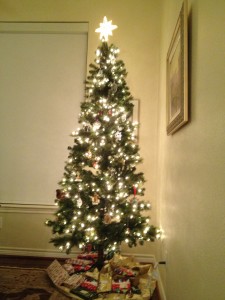
Wandering outside into the chilly night and glancing back and up, I discovered that young Tom has been at work framing in electric decoration the windows and doors over the old trail of the Katy.
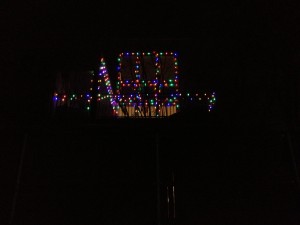
With eyes bulbing, I recognized as fact that, when the days wane short and the sting of cold is in the air, there is nothing quite as comforting as holiday lights, whatever their origins, history and color.
Take a stroll and enjoy the night. You never know what your neighbor may be doing over there near the house. It could be the start of a new tradition.
Let wonder be your guide. Young Tom did, and we’re better for it.
Keep smiling,
Grandpa Jim

